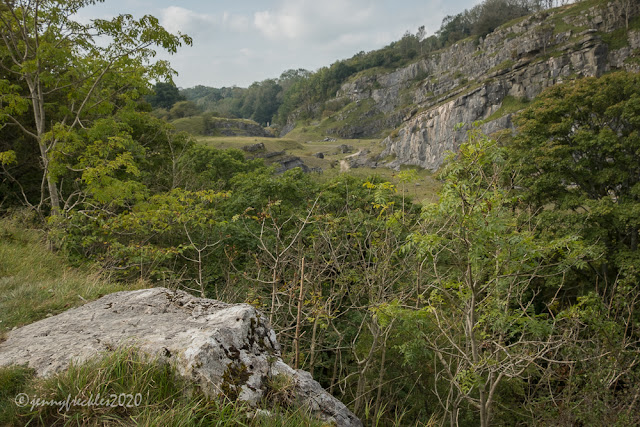I found the Brandt/Moore exhibition at the Hepworth, exploring the works of these two great artists of the 20th century, really fascinating. Bill Brandt was a photographer and Henry Moore a sculptor. They were contemporaries and first met in 1942 during WWII in London. Their work explores common themes: labour, society, industry, the British landscape and the human figure, and although using different media, they have uncanny parallels when you see them together. Moore's abstract reclining nude carved of elmwood (above), has more than an echo in Brandt's close up, abstracted studies of the human form (below), which look like an extension of the pebbles of the beach they are posed upon.
Some of the exhibits are studies of Londoners sheltering underground during the London Blitz, and again there are many parallels between the two artists. (Apologies for the unavoidable reflections in the glass covering the pictures.)
There was also a video playing, a war-time Ministry of Information film, about the stoicism and courage of Londoners during that dreadful time of nightly air raids. It actually brought a lump to my throat, seeming rather poignant in this current national (global) crisis. I fear we as a nation have largely lost the 'let's all pull together' qualities displayed in the war. In the early days of lockdown it seemed there was a surge of community spirit. The Cummings debacle, social media commentary and a general sense of mistrust of our leadership seems to have rather dented the spirit of togetherness.
Both Brandt and Moore documented the dirty industrial north in the pre-war years. Moore made a series of works sketched underground in a Yorkshire coal mine. Brandt photographed Durham miners and their families at home in the harsh conditions of the 1930s and 1940s. These images too had a poignancy for me. Growing up in the immediate post-war years, in a mining community, these kinds of scenes were familiar to me. My own family's circumstances had improved by the 1950s but I'm pretty sure my grandad and my great grandfather were well used to scrubbing off coal dust in a tin bath in the kitchen - and my aunt still had a dolly tub and mangle for the laundry, when I was a small child.



A shout-out to the Hepworth on two counts: one, their very well-organised procedures related to keeping everyone as safe as possible during this time of Covid; and secondly, their enlightened policy of allowing personal photography pretty much everywhere in the gallery. It's refreshing - and good practice, as I'm sure it encourages more people to visit, one way and another.


















































